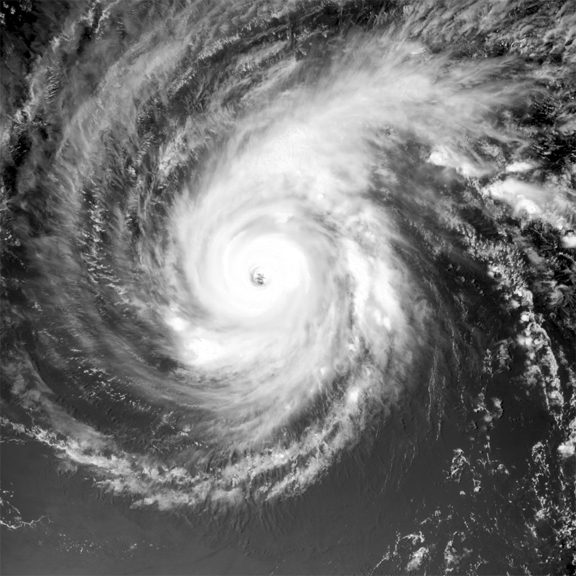Supertyphoon Chedeng, international name Maysak, has maintained its strength as it heads towards the Philippines for the first major typhoon of the 2015 summer season.
Weather forecasters warned the public that the supertyphoon, which packs 250 kilometer per hour winds and rains, could hit Luzon on Black Saturday, as most Filipinos are in their hometowns for the Holy Week holiday.
The Philippine Atmospheric, Geophysical and Astronomical Services Administration (Pagasa) said the eye of the typhoon with international name “MAYSAK” was located based on all available data at 1,280 km east of Guiuan, Eastern Samar.
It has maximum sustained winds of 215 kph near the center and gustiness of up to 250 kph. It is forecast to move west northwest at 17 kph.
Maysak killed four people when it made landfall in Micronesia on Tuesday. It is expected to enter the Philippine Area of Responsibility Wednesday night.
The Armed Forces of the Philippines (AFP) has placed military units in Luzon under red alert starting Wednesday in preparation for the coming of supertyphoon Chedeng.
The units under red alert are Northern Luzon Command, Southern Luzon Command, Central Command and the Joint Task Force National Capital Region.
AFP Chief General Gregorio Catapang Jr said the rest of the unified commands of the AFP are on blue alert status.
The Office of the Civil Defense (OCD) in Region 1 also raised a blue alert status for the entire region in preparation for Chedeng.
OCD 1 Officer Melchito Castro said they already have an action plan in place should supertyphoon Chedeng pass by Northern Luzon.
Typhoon Yolanda (international name Haiyan) was one of the strongest tropical cyclone ever recorded, devastating the Philippines in November 2013.
It was the deadliest Philippine typhoon recorded in modern history, killing at least 6,300 people in country.
Haiyan is also the strongest storm recorded at landfall, and the strongest typhoon ever recorded in terms of one-minute sustained wind speed.
Yolanda’s strongest wind was recorded at 230 kilometers per hour (10-minute sustained) and 315 kilometers per hour (1-minute sustained). – BusinessNewsAsia.com
